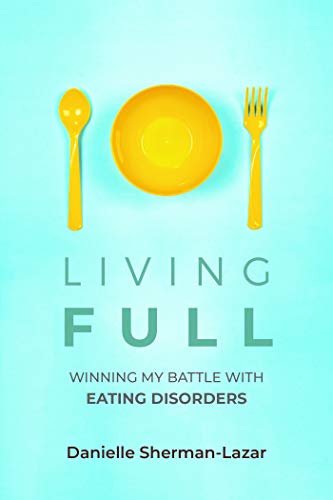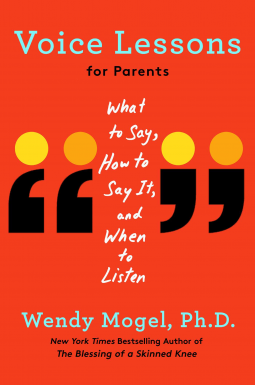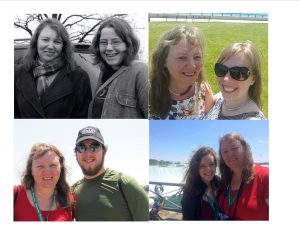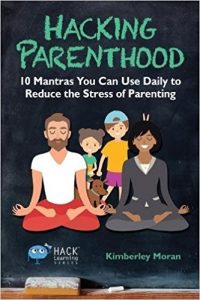 There is one thing that new parents agree on: They have no idea what they’re doing. Even when things start to go smoothly and they think they’ve finally got the hang of it, kids misbehave and parents wonder where they’ve gone wrong.
There is one thing that new parents agree on: They have no idea what they’re doing. Even when things start to go smoothly and they think they’ve finally got the hang of it, kids misbehave and parents wonder where they’ve gone wrong.
The most popular learn-as-you-go gig, parenting presents many challenges, not the least of which is discipline. Each generation has had their go-to “experts” to tell them how to get kids to behave appropriately. Oftentimes, this advice contradicts that of the prior generation, leading to conflict and criticism. Parents are blamed for being too strict or too lenient. New psychologists and theories are put forth as the definitive word on child-rearing; the old ones are quickly “outdated.” The debate on nature v. nurture rages on, and the effects of biology, free will and one’s unconscious enter into conversations about how and why things are the way they are.
Observing that children’s behavior seems to be out of control these days, and looking for guidance with her own children, author Katherine Reynolds Lewis spent five years searching for the answer to the question: What caused this behavior problem and how do we solve it?
In addition to the observable increase in behavioral issues, she learned that over the past 20 years, there also has been a dramatic increase in depressive symptoms and distractibility among high school and college-age students. Even more concerning is the statistic: “one in two children will develop a mood or behavioral disorder or a substance addiction by age eighteen.” Almost 40 percent will have two or more disorders. Consider the corresponding rise in childhood suicides, especially in younger children, those aged 10 to 14 and it is clear there is reason for concern.
Excessive screen time (social media in particular) is one potential cause. Another is the pressure to achieve, both academically and in extracurricular activities. Parents are sending our kids mixed messages. Today’s educational emphasis on necessary workplace skills such as collaboration and mutual respect are inconsistent with traditional parenting methods that focus on obedience. If the goal is to raise independent adults, insisting on them blindly following rules may be counterintuitive. Instead says Lewis, parents should think about the qualities they want their children to exhibit as adults.
In her recently published book, The Good News About Bad Behavior, Why Kids Are Less Disciplined Than Ever – And What to Do About It, Lewis draws from her own personal experiences as a parenting educator as well as the insights of psychologists, other educators and neuroscientists. The book is organized into three parts: The Problem, The Solution, and Making it Stick, and though the title suggests otherwise, provides valuable insights and techniques for all parents, not just those struggling with behavior issues.
The world has changed dramatically from the one today’s parents grew up in and many of the methods their parents used simply don’t work anymore. Family schedules and structure are different today: few children have the benefit of unstructured play. As a result, many children spend little time engaged in pretend play which, Lewis points out, helps “develop abstract thought, self-control, social cooperation, and other essential skills” as well as self-regulation.
In recent generations, parents have swung to extremes in the struggle to find solutions. Studies indicate that a middle ground is best: children of authoritative parents (those with clear boundaries and close emotional connections with their children) do better on all behavior assessments than those with either overly strict or permissive parents. Lewis goes a step further in recommending an Apprenticeship Model of parenting, which has much in common with Authoritative Parenting but adds an important component: modeling behavior.
Her approach utilizes techniques from four different “schools” and includes techniques proven in educational settings. She encourages parents to look at their own lifestyle and background and take from these philosophies whatever elements they think will work for them and abandon what won’t. Every family is different, so there is no one-size-fits-all answer to good behavior.
When it comes to discipline, Lewis advocates research-based models that include three components: connection, communication and capability. She says parents need to connect with kids to create an environment in which they will cooperate. They need to communicate their expectations and just as importantly, to listen to their children’s questions or concerns. Finally, parents need to coach their children, modeling skills that will build their capability. Like any other skill, behaving appropriately is something children need to practice and fail at in order to master. Parents should look at behavior issues as learning opportunities for areas in which children need to develop a skill.
This may require a change in approach and can be difficult. For starters, parents need to listen more and adapt their language. Lewis points out what should be obvious: “adults and children alike lose access to the learning and problem-solving parts of the brain when they’re emotionally ramped up.” As all parents learn, threats are not effective in changing behavior. Corporal punishment and harsh verbal discipline also have little positive effect; they cause a fight-or-flight instinct.
It is not news that children internalize the labels they are given. Lewis makes useful suggestions on how to change the way we speak and listen, such as the thought-provoking: use words you would like to be applied to your child (by himself or others) at age twenty-five. Drop the labels and instead communicate the problem or issue that needs to be addressed.
When there are lapses in behavior, ask why. When children fail to meet expectations, Lewis advises sticking to the four Rs: “Consequences should be related to the behavior, reasonable in scope, respectful of the child and revealed in advance.”
Many of the concepts suggested here are not new but are presented in ways that make sense with practical suggestions to implement. While the process is not easy, Lewis points out that once children master these skills, it will become second nature and the result will be more independent, capable adults. And isn’t that our ultimate goal as parents?
Note: Though an advance e-copy of this book was provided free of charge, no compensation was made for this review and the opinions are exclusively mine. KY


 A few years ago I was blessed to be welcomed into a group of amazing women. Many of these women are younger than I am (many are the same age as my daughters!), but somehow that doesn’t make a difference. Other labels we are quick to put on ourselves are irrelevant as well.
A few years ago I was blessed to be welcomed into a group of amazing women. Many of these women are younger than I am (many are the same age as my daughters!), but somehow that doesn’t make a difference. Other labels we are quick to put on ourselves are irrelevant as well.








 There is one thing that new parents agree on: They have no idea what they’re doing. Even when things start to go smoothly and they think they’ve finally got the hang of it, kids misbehave and parents wonder where they’ve gone wrong.
There is one thing that new parents agree on: They have no idea what they’re doing. Even when things start to go smoothly and they think they’ve finally got the hang of it, kids misbehave and parents wonder where they’ve gone wrong. In Voice Lessons for Parents: What to Say, How to Say It, and When to Listen, Wendy Mogel, Ph.D. provides a guide for parents to communicate with their children at all stages of development. Relying on three decades of experience working with parents and children as well as new research on neuroscience and biology, she provides guidance for all parents who may be struggling with communication in their homes.
In Voice Lessons for Parents: What to Say, How to Say It, and When to Listen, Wendy Mogel, Ph.D. provides a guide for parents to communicate with their children at all stages of development. Relying on three decades of experience working with parents and children as well as new research on neuroscience and biology, she provides guidance for all parents who may be struggling with communication in their homes.

 Nowadays, a few weeks a year have become my “collecting weeks.” With two currently in college, in geographically opposite directions, one an hour and the other five hours away, this means three days of travel and then loading/unloading the car. It’s a hassle and an expense, but, to quote a popular ad, having them home is “priceless.”
Nowadays, a few weeks a year have become my “collecting weeks.” With two currently in college, in geographically opposite directions, one an hour and the other five hours away, this means three days of travel and then loading/unloading the car. It’s a hassle and an expense, but, to quote a popular ad, having them home is “priceless.”
 Yesterday I attended the second annual #RealCollege: A National Convening on College Food & Housing Insecurity. Just about a year ago, I learned that there is a significant issue on college campuses today: too many students go without proper housing and not enough to eat. I was surprised at this fact and the deeper I explored the issue, the more surprised I became. Earlier this year, I wrote about the incidence of college hunger for
Yesterday I attended the second annual #RealCollege: A National Convening on College Food & Housing Insecurity. Just about a year ago, I learned that there is a significant issue on college campuses today: too many students go without proper housing and not enough to eat. I was surprised at this fact and the deeper I explored the issue, the more surprised I became. Earlier this year, I wrote about the incidence of college hunger for 